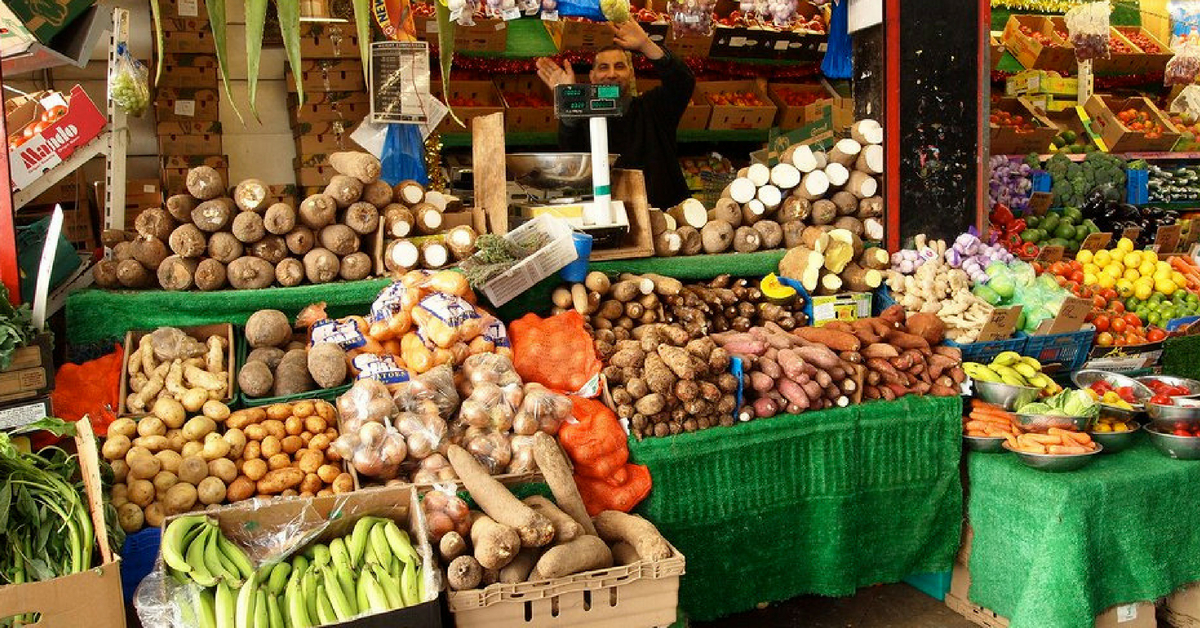With its enormous population and abundant agricultural resources, Nigeria has long been referred to as the “Giant of Africa.” Nevertheless, despite its potential, the nation struggles with a recurring problem called “food scarcity” that jeopardizes the livelihoods and general well-being of millions of its residents.
The country faces considerable difficulties in providing food security for its rapidly expanding population despite being blessed with a large amount of cultivable land, a variety of climates, and a great agricultural past.
The goal of this article is to raise awareness about the challenges Nigeria experiences in ensuring food security for its citizens, as well as the repercussions for the general public, the underlying reasons of food scarcity, and innovative solutions to this pressing issue.
These are some of the primary factors contributing to food scarcity in Nigeria.
I. The graveness of the Problem: With an estimated 220 million people, Nigeria is the most populous nation in Africa. Unfortunately, a substantial section of the population has trouble getting enough wholesome meals.
Nigeria today experiences some of the greatest levels of food insecurity worldwide, according to the UN. The severity of the problem is exacerbated by rising food prices, climate change, political unpredictability, and economic difficulties.
2. Climate Change and Agriculture: A major amount of Nigeria’s workforce is employed in the agriculture sector, which is primarily reliant on rain-fed cultivation and thus extremely vulnerable to the negative effects of climate change. Crop production have been negatively impacted by erratic rainfall patterns, protracted droughts, and a rise in insect and disease prevalence.
Devastating floods are becoming common, which causes crop failure, livestock loss, and decreased agricultural productivity. These difficulties disproportionately affect farmers, particularly small-scale subsistence farmers, which lowers food output and increases food scarcity.
3. Poor Infrastructure and Post-Harvest Losses: Nigeria’s poor infrastructure worsens the issue of food scarcity. The inefficient distribution of food is hampered by a lack of storage facilities, transportation systems, and effective post-harvest management techniques. These factors also contribute to considerable losses of perishable commodities.
Farmers frequently experience difficulties getting their produce to markets on time, which causes spoilage and waste. For post-harvest losses to be reduced and a reliable food supply to be achieved, it is essential to address these infrastructure gaps. Additionally, farmers’ ability to increase yields and reduce post-harvest losses is constrained by the lack of contemporary agricultural methods, access to high-quality seeds, and insufficient training.
4. Conflict and insecurity: The ongoing hostilities, especially in northeastern Nigeria, have a terrible impact on food security. As a result of widespread violence, population migration, and farmland destruction, agricultural activities are disrupted, which lowers output and increases food scarcity. Armed organizations’ presence also makes it difficult to access vital agricultural supplies and endangers the livelihoods of farmers and their families.
5. Creative Approaches and Initiatives: Notwithstanding its difficulties, Nigeria is seeing the growth of creative approaches to address the country’s food shortage. Technology is being used to better post-harvest management, boost crop yields, and enhance agricultural practices.
Farmers are being equipped with information and resources thanks to mobile applications, weather forecasting systems, and market information platforms. Additionally, government programs like the Green Alternative and Anchor Borrowers’ Programme support small-scale farmers financially while promoting sustainable agriculture techniques.
6. The role of education and policy: Education is crucial in addressing Nigeria’s food shortage. The nation may increase agricultural productivity and decrease vulnerability to climate change by offering farmers training in climate-smart agriculture, effective water management, and contemporary farming methods. Furthermore, policies that prioritize agriculture, boost investment and guarantee credit availability can foster an environment that supports farmers’ success and improves food security.
7. Land Division and Insufficient Land Use: The fragmentation of agricultural fields is the result of rapid population increase, urbanization, and conflicting land tenure systems. The potential for producing significant amounts of food has been constrained by this division, coupled with unsustainable land use practices and low uptake of automated farming.
8. Population Growth and Urbanization: With a projected 400 million people by 2050, Nigeria’s population puts pressure on the supply of resources and the distribution and production of food.
Consequences of Food Scarcity
1. Malnutrition and Health Consequences: Food scarcity immediately affects a person’s nutritional intake, which causes widespread hunger and its related health effects, including stunted growth, especially in vulnerable populations like children and pregnant women. Physical and cognitive development is hampered, diseases are made worse, and the population’s overall resilience is weakened by the inadequate availability of a variety of healthy foods.
2. Socioeconomic Instability: Food scarcity worsens poverty and socioeconomic inequality. Low wages and rising food prices together lead to a cycle of poverty that makes already vulnerable populations even more vulnerable. The turbulence may worsen the problems facing the country by fostering social unrest, migration, and political instability.
3. Security Challenges: Food insecurity, particularly in areas already dealing with security challenges, can fuel social unrest, violence, and migration.
Potential Solutions
1. Agriculture industry Diversification: Nigeria needs to stop relying so heavily on oil money and start putting more emphasis on the growth of its agriculture economy. Crop diversification, the promotion of high-value cash crops, and assistance for small-scale farmers can all increase output, increase food availability, and lessen the nation’s reliance on food imports.
Enhancing production and reducing the effects of climate change can be accomplished by promoting the use of precision agriculture, sustainable land management practices, and contemporary farming methods.
2. Climate-Resilient Farming Methods: Farmers’ resistance to the effects of climate change can be improved by investing in climate-smart farming practices like conservation agriculture, agroforestry, and water management systems. This entails using crop cultivars resistant to drought, effective irrigation techniques, and enhanced soil management techniques.
3. Investment in Infrastructure and Technology: Improving rural infrastructure, such as irrigation systems, storage facilities, rural electrification, and transportation networks, is necessary to reduce food loss and improve post-harvest management.
Advancement of digital technologies can also make it easier for farmers to reach markets and guarantee fair prices for their products. Examples of these are smartphone applications for agricultural information and e-commerce platforms for farmers.
4. Policy Reforms and Supportive Governance: The Nigerian government has to put a priority on food security by implementing helpful policies like land reforms, farmer access to credit, and strong social safety nets. The effectiveness and durability of initiatives can be improved by bolstering institutional structures, encouraging research and development, and developing public-private collaborations.
5. Investing funds into research and development: Supporting the Development of Climate-Resilient Crops by Prioritizing Research and Development. Agricultural research, innovation, and technology transfer can boost productivity of crops that are tolerant to climate change.
6. Improving Access to Insurance and Credit: Financial assistance and risk-reduction strategies suited to farmers’ requirements can encourage investment in agriculture and protect against losses.
7. Improving Market Linkages: Small-scale farmers can gain better access to markets and experience a decrease in post-harvest losses by utilizing productive supply chains, farmer cooperatives, and technological platforms.
In conclusion, the lack of food in Nigeria continues to be a complicated and diverse problem that is deeply connected to issues like climate change, infrastructural shortages, violence, and economic hardships that threaten the stability, growth, and development of the country. However, Nigeria has made encouraging strides in addressing this issue through creative approaches and political initiatives.
A multifaceted strategy covering sustainable agriculture, infrastructure development, financial support, market connections, and research and development is needed to address this issue. Nigeria can realize all of its agricultural potential and provide for the needs of its expanding population.
To overcome this urgent problem and create a future in which no Nigerian goes hungry, comprehensive plans must be put into place, and cooperation between the public and corporate sectors, civil society, and international partners must be encouraged. Nigeria may work to provide economic prosperity and food security.











